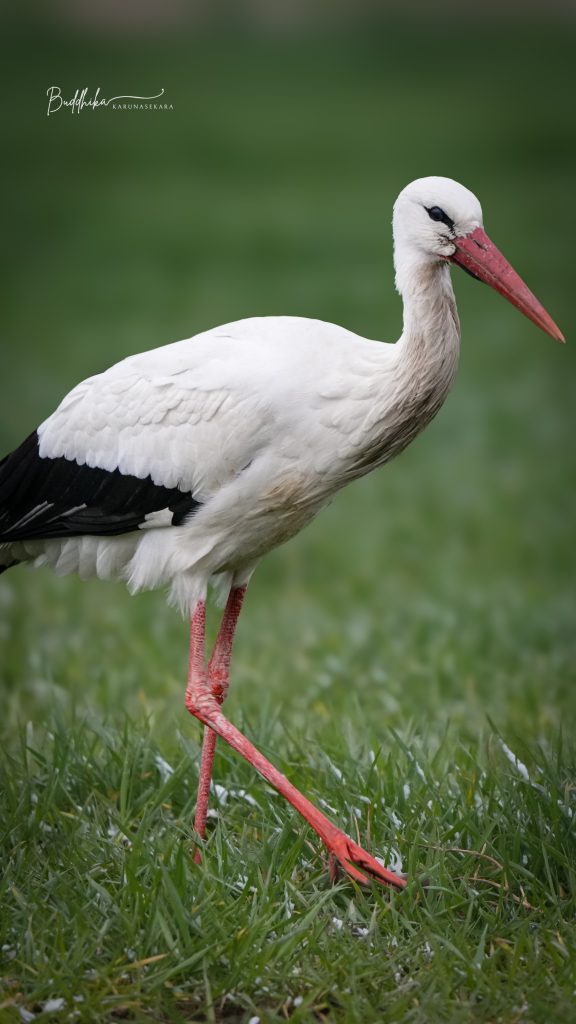
With long crimson legs and a snow-white body trimmed in black, the white stork walks the edges of myth and meadow alike. A silent traveller across continents, it appears each spring like a whisper of new life, nesting high above chimneys, steeples, and thatched roofs. Its tall, upright stance and watchful gaze have inspired wonder for centuries.
In European folklore, the white stork is a bearer of good fortune, a sacred visitor that brings new beginnings. Its most enduring role is that of the mythical deliverer of babies. Across Germany, the Netherlands, and Scandinavia, tales have long described storks carrying newborns in linen bundles from distant lands. These stories once served to gently explain childbirth to children, but they also reflect a deeper belief in the stork as a guardian of the household and a symbol of fertility.
In ancient Greece, the stork was associated with familial duty and care. The word “pelargonia”, derived from pelargos (stork), described the moral obligation of children to care for their ageing parents – mirroring the stork’s own behaviour of tending to its elderly in the nest. Roman and Greek myths also link storks to transformation, featuring them in tales where wrongdoers are turned into birds as a form of redemption.
In Slavic and Baltic cultures, white storks are closely tied to the land. Their return in spring is seen as a blessing on crops and homes. In Lithuania and Poland, it is considered extremely lucky for a stork to nest on your roof. People once built special platforms or wheel frames to attract storks, believing their presence protected the home from fire and misfortune. To harm a stork or its nest was to invite bad luck.
In Egypt, the stork is thought to represent the human soul. Ancient beliefs held that souls could travel as birds, and the stork’s long migration – vanishing and returning with the seasons – came to symbolise rebirth and the eternal cycle of life.
Even in Jewish and Islamic traditions, the stork is admired for its loyalty and gentleness. In Hebrew, it is called chasidah, meaning “the kind one”, due to its perceived devotion to its mate and offspring.
Despite its size and strength, the stork is a quiet bird. It does not sing, but communicates through bill-clattering rituals, especially during courtship. These sharp, rhythmic sounds echo from rooftops and trees, announcing the return of an ancient companion to human life.
To see a stork in flight – wings outstretched, legs trailing, soaring high above open plains – is to witness something both wild and familiar. It is no wonder that people across continents have woven the white stork into stories of life, death, and everything between.
